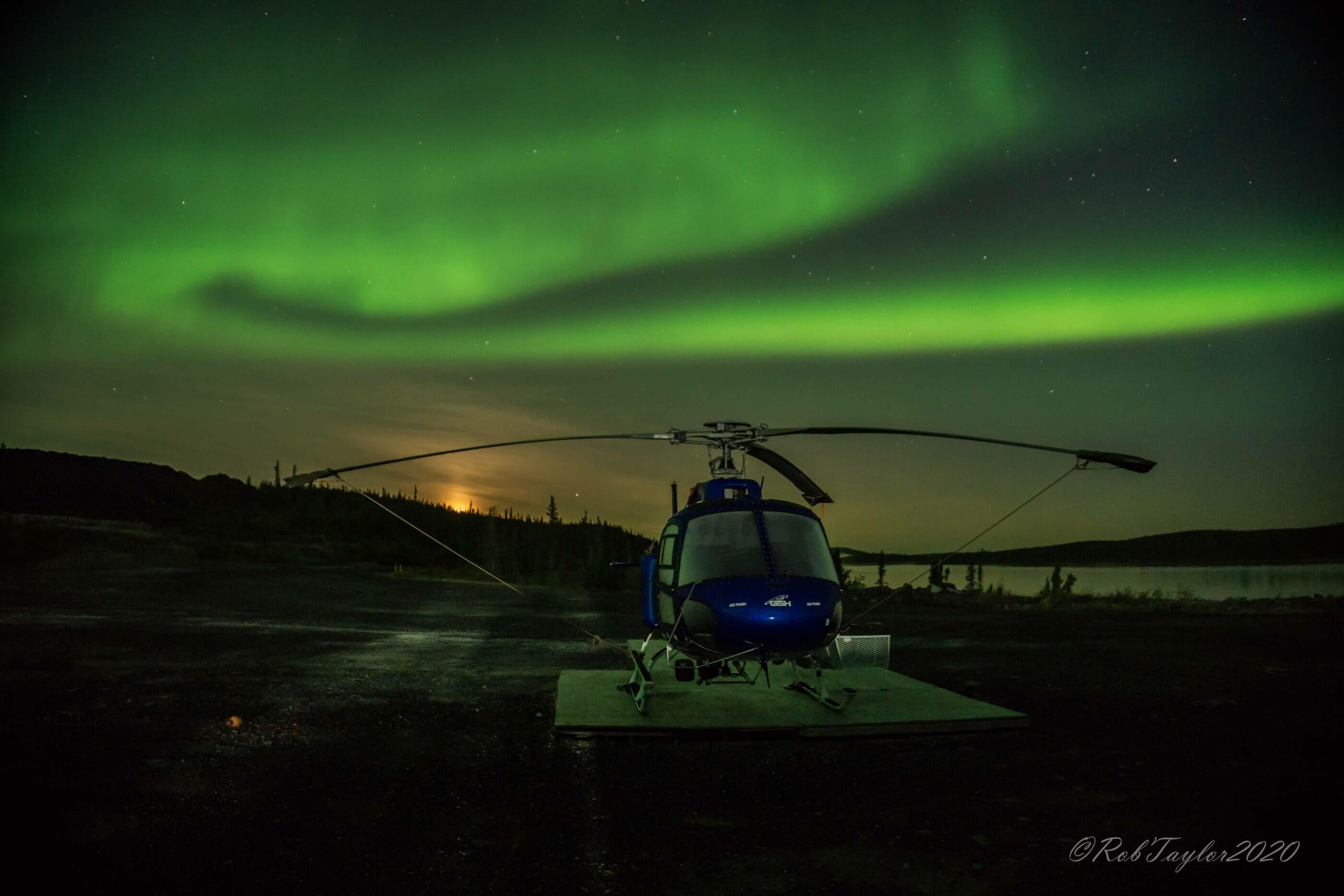Even in terrible weather, it’s common these days to find helicopters flying swiftly over the coastal mountains of northern British Columbia, ferrying cargo to mineral exploration sites.
In some cases they fly as high as 7,000 feet (2,130 meters), lugging drill equipment and temporary encampment buildings into the frigid Canadian hinterland. They also carry geologists and other explorers looking for untapped deposits of gold, silver and other precious materials.
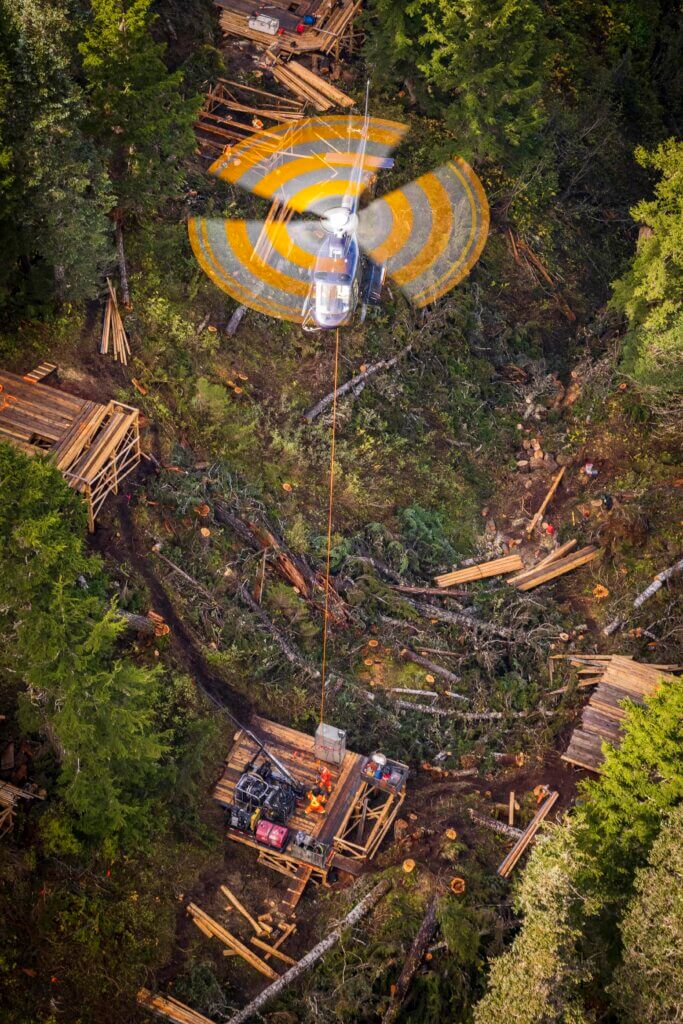
This flying job isn’t easy, and it’s far from an entry-level position. Given the global pilot shortage, it’s increasingly difficult to find qualified pilots able to work here.
But a recent spike in exploration activity is warmly welcomed by many Canadian helicopter operators. After years of sparse work in the sector, stemming from a decline in mineral prices that began around 2011, the mining sector there has rallied and is enjoying brighter days.
“The last few years have been getting busier and busier,” said Steven Williams, director of flight operations at Summit Helicopters, a Canadian mining specialist. “It’s just super promising.”
Summit has six Bell 407 helicopters dedicated primarily to drill moves, and in 2021, the company saw a record number of flight hours directly attributed to silver and gold exploration.
“It was a little bit lower last year, but not much,” said Williams. “And we’ve already got clients lined up for the summer [of 2023].”
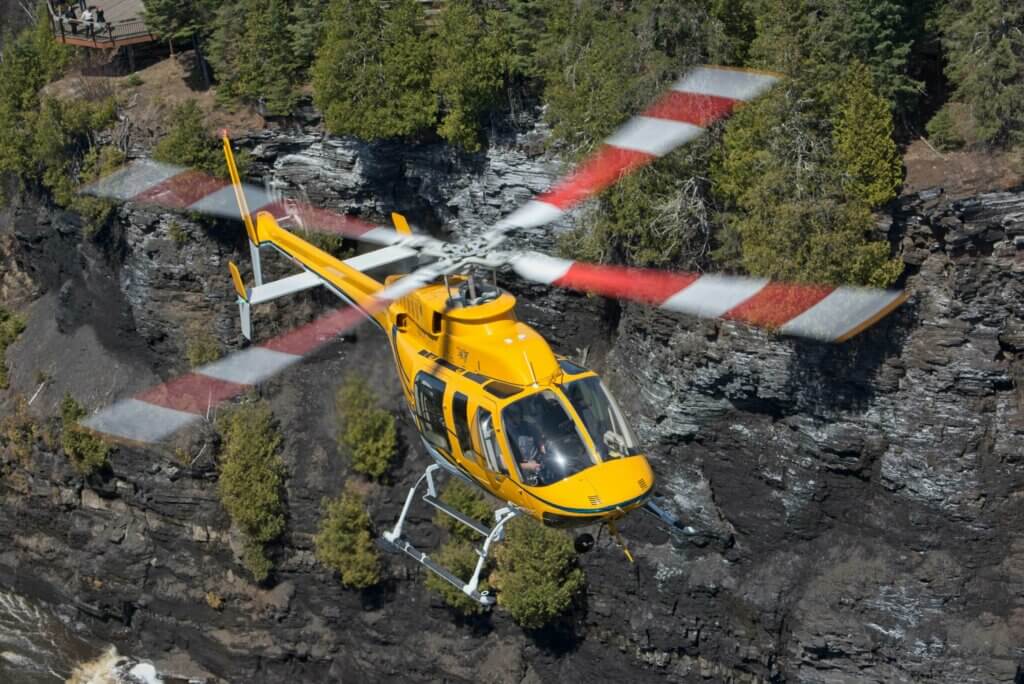
Canada has vast known deposits of gold, silver, and diamonds. It’s also rich in cobalt, lithium, and other minerals used in electric vehicle batteries. In many circles, it’s believed the transition to lower-carbon industries may create a new mining boom in the country, and helicopter operators are cautiously optimistic about the role they’ll play.
“It’s looking as busy, if not busier [this year], in many of the projects,” said Williams. “It’s looking good.”
MARKET-DRIVEN ACTIVITY
The mineral exploration sector in Canada thrives and suffers in step with shifting global markets. When commodity prices are high, mining companies often invest in exploration to find lucrative new mineral and metal deposits. In a market downturn, those efforts are typically scaled back. Helicopter activity in the sector typically mirrors this boom-and-bust cycle.
“Some years are slower than others,” said Ryan Hinds, CEO of Silver King Helicopters in Smithers, B.C. “I would say that the last two to three years have kept us steady, but that is usual for us.”
Silver King operates a fleet of 10 Airbus AS350 helicopters, and specialized in mineral exploration when Hinds and his partner Missy launched the company in 2012. It has since expanded to serve the tourism and fire suppression markets, but Hinds is a long-time pilot with more than two decades of mineral exploration experience under his belt.
“It takes a substantial amount of experience to work mining and drill programs here due to the mountainous terrain and the challenging weather,” he said. “We are a group of professionals here who fight hard to maintain helicopter rates and high standards.”
EXPECTING THE UNEXPECTED
To a casual observer, commodities markets can seem fickle. It’s certain they’ll rise and fall; the problem is, nobody knows when or by how much. In 2011, mineral and metal prices reached a cyclical peak, driven by rapid growth in China and other emerging market economics, according to Natural Resources Canada (NRCan). As supply outpaced demand, prices began a decline that bottomed out in 2016.
Then came a steady market rally that endured through the last half of 2019. In early 2020, prices shifted due to economic lockdowns related to the Covid-19 pandemic, then recovered later the same year as supply diminished and demand increased.
The rise in prices intensified in 2021 and the first half of 2022 due to inflationary pressures and the Russia-Ukraine conflict. As prices continued to rise, Canadian mining companies sharply increased their expenditures for exploration and deposit appraisals.
Exploration activity was expected to reach $2.6 billion in 2022, based on reported spending intentions — an increase of about $1 billion from 2020. Gold and other precious metals were the main targets for exploration spending among Canadian companies.
This activity was part of a larger trend that saw the global nonferrous exploration budget increase by 16 percent in 2022 to $13 billion, according to a study by S&P Global Market Intelligence. Gold allocations that year increased by 12 percent worldwide to $6.9 billion, and copper increased by 21 percent to $2.8 billion — its highest levels in eight years.
Despite this promising news, it’s important to note recent expenditures are dwarfed by exploration budgets from a decade ago. They were still 58 percent lower than global exploration budgets in 2012, and the outlook for 2023 is only cautiously optimistic.
“With inflation creeping up . . . and metals markets facing macroeconomic headwinds, metals prices have corrected from their recent highs and are expected to fall further into 2023,” said analyst Aude Marjolin, writing in S&P Global’s 2023 Metals and Mining Industry Outlook.
“Moreover, capital costs and energy prices are expected to rise, leaving miners with potentially lower excess cash reserves to put toward purchasing activity or exploration — or both, depending on the acquired target.”
PANDEMIC PRESSURES
Although markets were partly to blame for the downturn, some helicopter operators in northern Canada also attribute the dip in exploration work to the Covid-19 pandemic.
“The mine sites were doing well, but what you saw a bit of a hit on was remote field camps,” said Jonathan Talon, director of operations at Great Slave Helicopters in Yellowknife, Northwest Territories. “They just weren’t able to put camps out, really,” he said. “So we didn’t see the amount of work that we would normally see in a given year.”
In 2022, this kind of activity rebounded, but it still only registered as “fairly average,” he said.
“[It was] what I would call a normal year, but I’m starting to question what normal is, at this point.”
Great Slave Helicopters has a fleet of 32 rotorcraft, with 46 pilots spread out over 15 bases in the Yukon, the Northwest Territories, Nunavut, Alberta, Saskatchewan and British Columbia. The fleet includes four Bell 212s, two Bell 205s, 19 Airbus H125 AStars and a group of seven additional Bell 206 JetRanger and LongRanger helicopters.
Its roster of active pilots varies throughout the year, and Talon wouldn’t speculate on whether that will increase for the company’s peak mining season in June, July and August.
“This year so far, it looks fairly promising,” he said in a January 2023 interview. “We’re looking at not as busy of a year as last year, but still quite busy.”
Since many of Canada’s mining exploration sites are in remote northern areas, helicopters are the primary vehicle for supplying them with workers and large cargo. But the pilot shortage, coupled with new regulations for flight crew fatigue management, have put a strain on some northern operators.
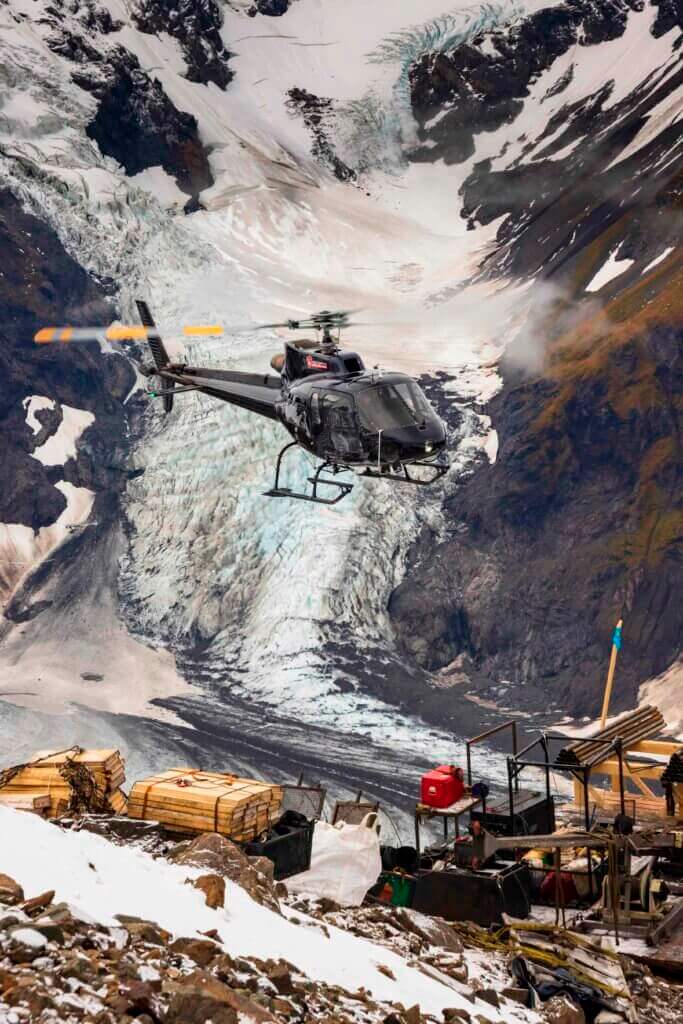
“For a lot of what we do, we require people who have precision longline skills,” said Talon. “When it comes to working not directly during the summer months, there’s obviously snow on the ground, which requires a pilot who has had northern experience . . . it has been incredibly difficult.” Still, Talon said he’s “very optimistic” about the next two to three years.
“I think we have a very dynamic team,” he said. “And we’re very good at adapting, growing and shrinking as we need to, in order to accommodate what the world is doing at the time.
“It’s very difficult to say what’s going to happen now. I think nobody would argue the fact that year by year, it’s become increasingly difficult to anticipate what’s going to happen. But if you have a company that can move with the times, move with the paces, that changes a lot.
So I think we’re well positioned as a company.”
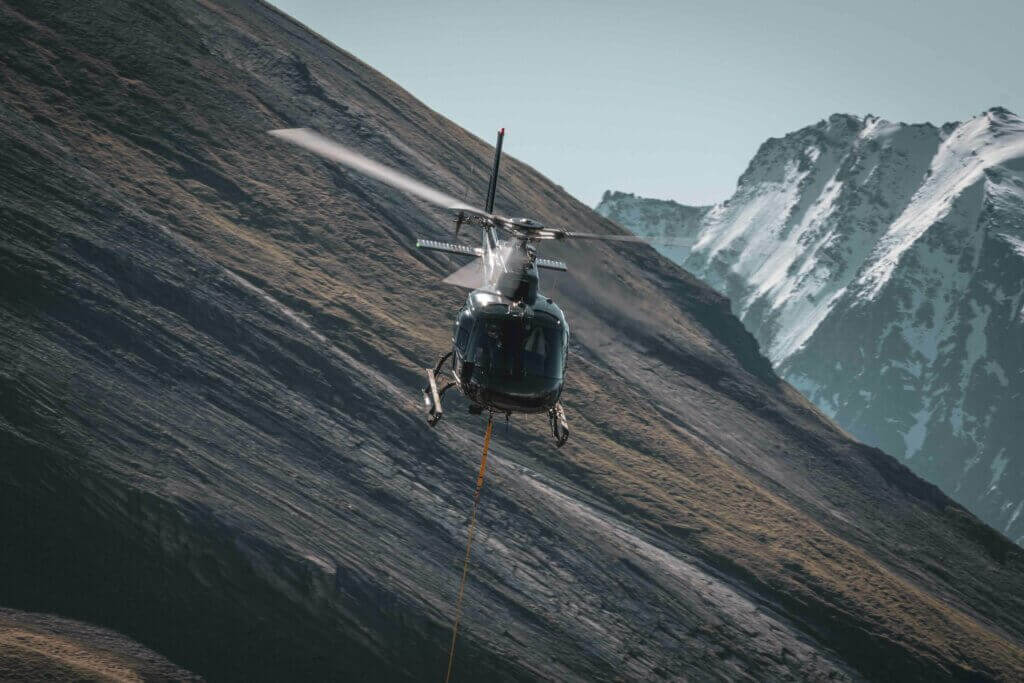
ABUNDANT MINING INQUIRIES
At Toronto-based National Helicopters, the management team receives several calls a month with offers of work in the mining sector. So far, it has had to turn them all down.
Up until five years ago, the company was active in the mining sector, working jobs in Mexico, the United States and Canada. But it stopped due to a need for larger and heavier equipment.
“They were looking for [a helicopter] with more capacity than what we currently have here,” said Dan Munro, president of National Helicopters. The company operates a fleet of 12 rotorcraft, including Robinson R22s, Bell 206 LongRangers, Bell 206 JetRangers, MBB Bo.105 and twin-engine Bell 430s.
“There’s a number of new mining plays that are starting up,” said Munro. “There’s some that have been restarted that were shut down. It’s all being driven by the demand for these precious metals in the electric vehicle [sector] and other equipment.”
These days, the company is known for its flightseeing tours over Niagara Falls and the adjacent countryside — a thriving wine region that serves as Canada’s answer to Napa Valley.
Munro said the company has considered a return to mineral exploration, but rising interest rates have complicated the need to finance new helicopters for the fleet.
“The interest rates are putting a damper on business in general,” he said.
“You have to decide whether you want to do it. Is it a long-term thing or a short-term thing? If you’re going to take on the financing, it has to be a long-term thing. So is that part of the mining industry going to stay or sustain itself? I don’t know.”
He laughed when asked if mining work is still on his list of possibilities.
“I’m really not sure,” he said. “My crystal ball isn’t that big.”
MINING THE RING OF FIRE
In Ontario’s far north, about 310 miles (500 kilometers) northeast of Thunder Bay, sits a massive swath of land known as the Ring of Fire. It’s viewed as one of central Canada’s most promising mineral development opportunities — and it’s a hotbed of exploration activity.
The Ring of Fire stretches over about 1,930 square miles (5,000 square kilometers) and deposits of chromite, copper, zinc, gold, diamond, nickel and platinum group elements have been found there.
As of January 2022, there were more than 26,000 active mining claims in the region, where developers see a prime opportunity to feed low- and zero-emission vehicle manufacturers.
Operators like Wisk Air Helicopters provide access to remote exploration sites, primarily by transporting drills and mining crews to places other vehicles can’t reach.
But despite a recent uptick in available work, the economic conditions of the last few years and a variable environment for permits have taken their toll.
“Mining used to be 40 percent of our work; now, it’s 10 percent,” said Mark Wiskemann, president, operations manager and chief pilot at Wisk Air Helicopters.
“It’s expensive to develop mines in Canada with the environmental and regulatory restrictions that are placed on exploration companies. As a result, they’ve gone to different countries, [and] our business has changed.”
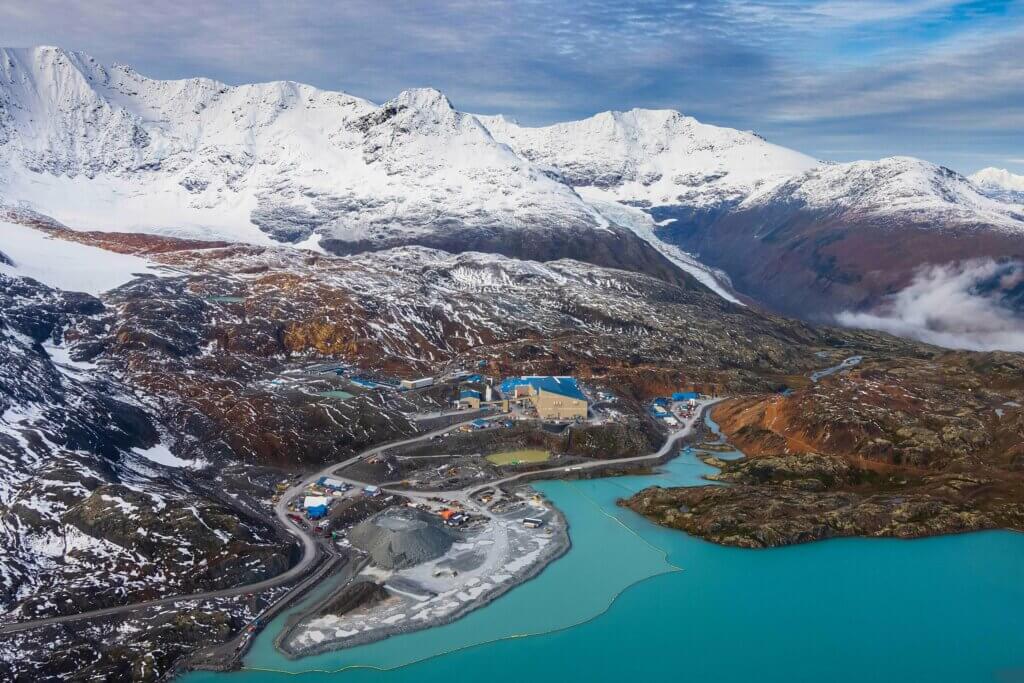
In contrast to other operators, Wiskemann said it’s been easy to find qualified pilots to work in the region. “We’ve got lots of pilots,” he said.
Wisk Air operates a fleet of five Bell 407 helicopters, three Bell 412s and three Bell 206 LongRangers, with about 20 active pilots as of late January 2023.
A larger concern is the industry’s unpredictability.
“I’m cautiously optimistic [about the future], based on the regulatory problems, because that’s something an economic forecast cannot consider,” said Wiskemann.
“It’s difficult to buy aircraft, train pilots and engineers and mechanics . . . we’re talking millions of dollars. It’s difficult to do that if the earning environment changes without notice.”
In Canada’s mining sector, the only safe prediction is that unpredictable conditions are sure to follow. Today’s upswing may soon beget another downturn. Helicopter operators know they’ll have to adapt to survive.
“These things always work in a rollercoaster,” said Dan Munro, president of National Helicopters. “It’s up and down all the time.”





